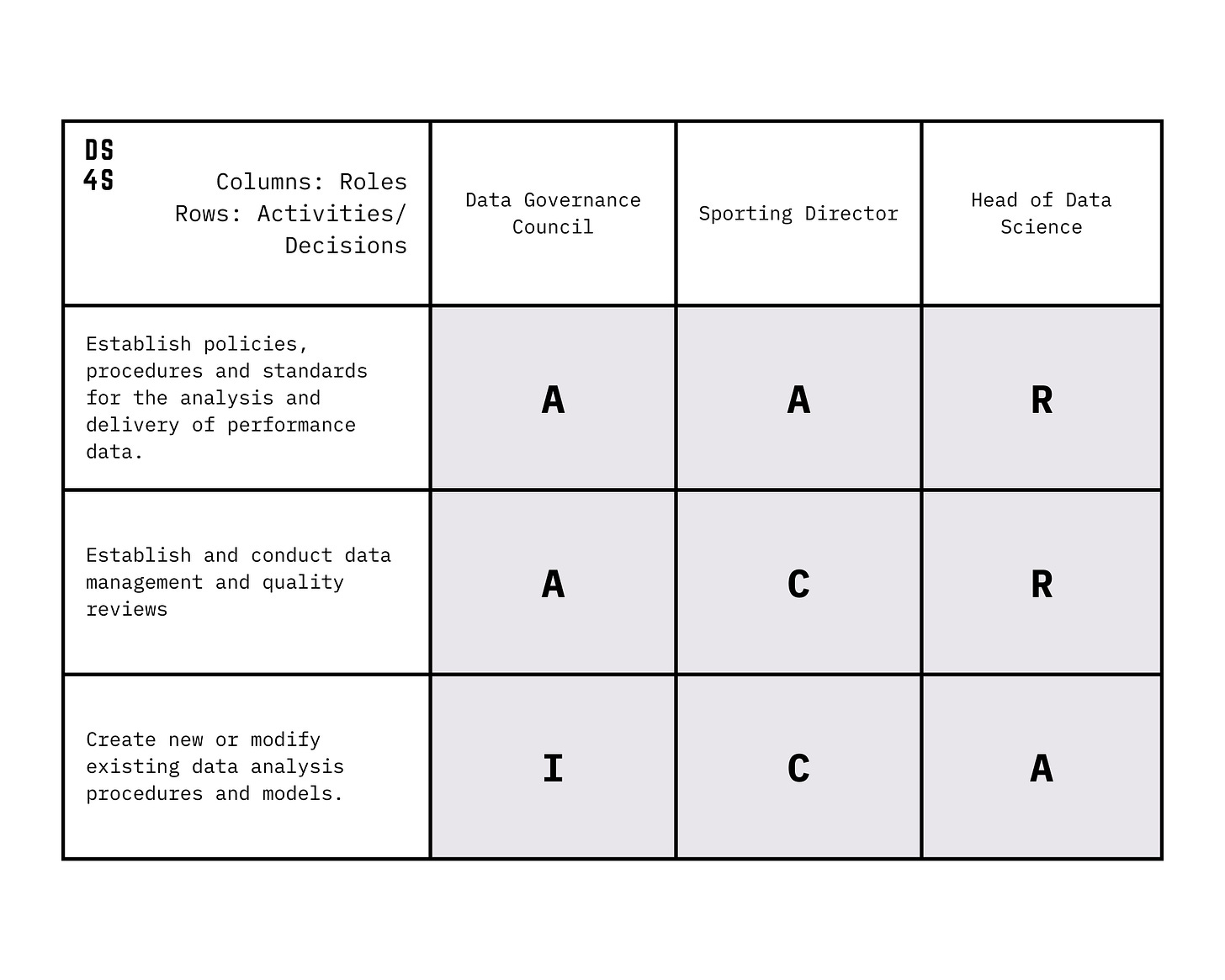The general term “Governance” refers to the system of rules, practices, and processes that ensure an organisation’s strategies are set, monitored and realised. From the 1990s onwards organisations started to shift away from viewing data as just the by-product of transactions to acknowledging it as a valuable resource which can drive business decisions and processes. Data management systems started to emerge to handle the increasing volume and variety of data being produced, examples of these systems included databases, data warehouses and lakes, enterprise resource planning and customer relationship management software. The domain of high-performance sports has had an evolution analogous to those companies in the early 90s, the shift away from purely subjective based decision-making and the progressive adoption of technology in sports led to an increase in the velocity and complexity of the data being produced.
The volume and complexity of data being produced in sporting organisations is continuing to explode, reinforcing the need for sustainable data governance and management frameworks. In the last post, we presented the question “Who is responsible?” for the development, implementation and monitoring of data governance in sporting organisations or their specialised departments. When answering the question the consensus seems to be that “it’s not clear”. This lack of defined roles and responsibilities can lead to oversights, delayed decisions, compliance breaches and generally unfavourable outcomes.
When it comes to designing and implementing a data governance framework or adapting an established model there are numerous different perspectives or functions from which the process can be approached. A common option is to consider data governance as the process of defining who has authority, control and decision-making responsibilities over the management of data and its derived assets. Another way of thinking about this would be to map key individuals to data assets at different points along a timeline. Consider the following example of a dataset collected during a single game:
Performance Analyst: Collects and processes technical and tactical data from observational analysis on game day.
Coaches: Post-game coaches enrich the data further through specialised analysis.
Data Scientist: Data Scientists/ Analysts combine and augment the data with other sources (i.e. player tracking data).
Sport Scientist: Uses the data to augment other game-based information (i.e GPS Tracking).
Management: Management / Heads of Department view team and athlete reports derived from the processed data.
This is a very simple timeline, yet the data will go through several iterations and interact with numerous stakeholders, resulting in a complex set of relationships and rendering a single data owner ambiguous. In identifying the main interactions that occur across the data timeline, organisations can start to map roles and responsibilities to specific individuals through the use of an RACI matrix.
RACI is an acronym for Responsible, Accountable, Consulted and Informed, these are the four levels of responsibility an individual(s) have in the data management and governance process within an organisation. They are defined as follows:
Responsible: the individual(s) responsible for executing an action or managing a data asset.
Accountable: the individual(s) accountable for authorising a decision and completing a process.
Consulted: the individual(s) that should provide input and support on an action or decision.
Informed: the individual(s) that should be notified of a completed process or the outcome of a decision or action.
The configuration of the matrix will be unique for each organisation, and roles and activities will align with the structure of the backroom staff across the different departments while considering the overall strategy of the team and club.
The benefit of coordinating decision-making around data assets through the use of techniques such as constructing an RACI matrix are numerous. Direct benefits include a reduction in risk, data corruption and loss, improved efficiencies and security. Indirect benefits can also arise such as improving the perception of data in the decision-making process, and reducing the resistance to new data systems and projects while improving trust across the various stakeholders who manage and interact with data assets.
Ultimately effective data governance and management in sports helps to ensure that the right people get the right information at the right time, which is a crucial element in the success of a team or club. Hopefully, this post has encouraged you to reflect on the current state of data governance within your organisation or department. Feel free to share this post with a friend or colleague and for more posts like this be sure to subscribe.




